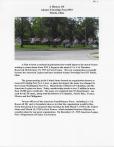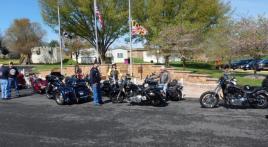BEST OF TWO CHOICES
As I write this, John Kerry is in Japan, reportedly preparing the Japanese for an apology by Obama for having dropped the bombs on Hiroshima and Nagasaki. Obama wasn’t even alive then. I was. In uniform. At Camp Lejeune Marine Base in North Carolina. Assigned as a corpsman to a Marine division on Guam that would spearhead Operation Olympic, the final assault on the home islands of Japan with an estimated death toll of a million Americans and 3-4 million Japanese. One of them was very likely to be me. So I’m biased!
So we should end the story right there? Dropping the bombs saved an estimated five million American and Japanese lives?
No. Let’s start with a horrifying but verifiable statistic: Sixty million people were killed by the Axis Powers and Imperial Japan in the six years between Germany’s invasion of Poland in September, 1939, and the surrender of Japan in September, 1945. Remember this statistic: 80% of those were civilians! By execution and starvation.
Now, for those who weren’t there or don’t remember the details, let’s recapitulate what led to the bombing of Pearl Harbor on December 7, 1941.
It was not a sudden whim of Hirohito. It was a continuation of a policy in effect for decades: the “Greater East Asia Co-Prosperity Sphere.”
(Get out your atlas.) In the last part of the 19th century and the first half of the 20th century, Japan was an efficient, vicious, killing machine. It had taken by force Sakhalin, Hokkaido, the Ryukus (including Okinawa), the Bonins (including Iwo Jima), and the Carolines (including Pelelieu). By bloody warfare it had conquered Korea, Manchuria, and the immense country of China.
The Phillipines and the United States were next.
When in 1937 the Japanese army defeated the Chinese army at Nanking, the Army raped, tortured, and then slaughtered 300,000 Chinese to the cries of “Long love the Emperor.”
Three individual stories, among many thousand: Shinto Uno of a field intelligence unit boasted of personally beheading more than forty prisoners. Lt. Shozo Tominaga found that his first beheading was “uplifting.” “I felt something change. I gained strength somewhere inside me.” He recalled teaching recruits how to enthusiastically run bayonets through live, blinded-folded Chinese tied to poles. Azuma Shiro describes the time he bayoneted a child; the grandfather tried to stop the bleeding, so Shiro killed both of them.
Two hundred thousand female Koreans, Chinese, Filipinas, Indonesian, and Dutch POWs were sent to combat zones to serve the Japanese soldiers as “comfort women.”
In 1936, Colonel Shiro Ishii opened his infamous Research Unit 731 in Pingfan, Manchuria. Its 150 buildings housed thousands of Chinese, all of them used as human guinea pigs.
When Bataan and Corregidor fell to the Japanese in early 19442, 1300 U. S. POWs were sent to Pingfan to suffer agonizing deaths. Masked “medical personnel” injected them with various toxins, inserted glass probes into their rectums and purposely broke them, injected tetanus spores into their heels, tied naked men in minus-40 degree weather to chart how fast their limbs froze solid, fed them typhus-infected tomatoes, sprayed them with anthrax, cholera, typhoid and plague-infested fleas. Drained their blood and replaced it with horse and monkey blood in an effort to create artificial bloods, tied them to stakes and exploded germ bombs overhead while timing their deaths with stop-watches, and dissected them alive without anesthesia. Not surprisingly nearly 100% of those American soldiers died. Of those few that lived, most refuse to talk about it.
The founder of the “hospital,” Colonel Ishii, performed autopsies on the dead, meticulously recording his research, referring to the bodies as maruta, logs.
Overall, 34% of all Americans held prisoner by the Japanese died. (In contrast, in German camps, 4% died.)
On the Bataan “death march,” an average of one American fell every fifteen yards and instead of being taken care of, was shot or bayoneted.
Over 120,000 Allied prisoners died working on the Burma (Myanmar) -- Siam (Thailand) railroad.
Why a 34% mortality? Open ditches served as latrines. The rice was rotten, filled with rat droppings and maggots. Thousands were tortured to death by removing fingernails with pliers, thumbscrews, water “cure,” beatings with sticks, iron bars, knotted ropes, wooden clubs. Soldiers forced rice down prisoners’ throats by the fistful, poured water into them by the gallon until they swelled up inside, then jumped on their bellies till they split open.
Enough! One could go on and on!
Seven years after the war ended, I was in Nagasaki, on R & R from Korea where I was in combat with the First Marine Division. I was visiting with a missionary who had been in Japan when the war started and returned shortly after it ended. She spoke fluent Japanese. I asked her how her Japanese friends felt about the bombing of their city. She said that almost 100% felt that they deserved it, it was their punishment for starting the war at Pearl Harbor. I asked her how the rest of the country felt. She said she didn’t know but believed that it was the same everywhere.
I fully realize that this is anecdotal. I have no idea how the survivors of Hiroshima felt, nor how the rest of the country felt. But I fully agree with Rep. Mark Tarkano, an American of Japanese descent who recently said in Congress that the president should go to Hiroshima, but – get this – should not apologize!
But, you say, the victims of the bomb were civilians. So? That argument rings hollow as soon as you remember that 99% of the 200,000 Americans killed by the Japanese in the south Pacific were civilians before the war and 99% of the survivors returned to civilian life after the war.
Let’s get another thing straight. There is no “good way” to end a war. The Japanese were given innumerable chances to surrender after it became obvious to the Japanese that they weren’t going to win the war. Innumerable times they sent messages saying that they would not surrender unconditionally, only on terms that were totally unacceptable to the Allies. Sixty million leaflets were dropped on the bigger cities, urging the citizens to evacuate their towns and urging them to petition their rulers to capitulate. Their rulers’ answer: an upsurge of thousands of suicide kamikaze attacks, the finest of Japan’s young men dying in honor rather in the ignominy of defeat.
In effect, the Japanese were saying that they chose to sacrifice five million men rather than surrendering and “losing face” by doing so.
Harry Truman, president for only a few months, had very few choices, in fact, only two. Drop an atom bomb or continue to prepare for invasion of the Home Islands. He chose the former, with unanimous consent of those aware that we had such a weapon. The bomb dropped on Hiroshima on August 6th. The Japanese made it very clear that they still would not surrender unconditionally. So the second bomb was dropped on Nagasaki three days later.
Ten million Americans in uniform and 175 million Americans fighting and suffering on the Home Front were overjoyed when the carnage ended.
I know I was. As we were preparing to leave for Guam to join our Marine units, no one ever said or hinted at the fact that we were unlikely to come through unscathed. In our off-duty hours we played tennis, sailed our Lightnings in New River Bay, swatted mosquitoes all night, wrote letters home telling parents and girl friends that we were enjoying life greatly!
I remember very clearly where I was and what I was doing when we heard the news that Japan had surrendered. I was on my ward, playing cribbage with a Marine wounded on Iwo Jima. A corpsman burst into the ward shouting, “It’s over, it’s over, it’s over………..!”
A roar that probably burst a few ear drums! Hand-shaking! Back-slapping! Foot-stamping!
Quiet.
Some weeping. Not for themselves. For those close buddies who weren’t there to celebrate what they had died for.
With huge grins we shook hands, my Marine buddy and I. I knew where he’d been. He knew where I wasn’t going. We both knew where we were going.
Ten million of us were going home.
So, Mr. President, never, never, NEVER apologize to anyone, especially not to the Japanese, for having saved millions of Japanese lives by dropping the bombs.
J. Birney Dibble, M. D.
W 4290 Jene Road
Eau Claire WI 54701
715/832-0709




